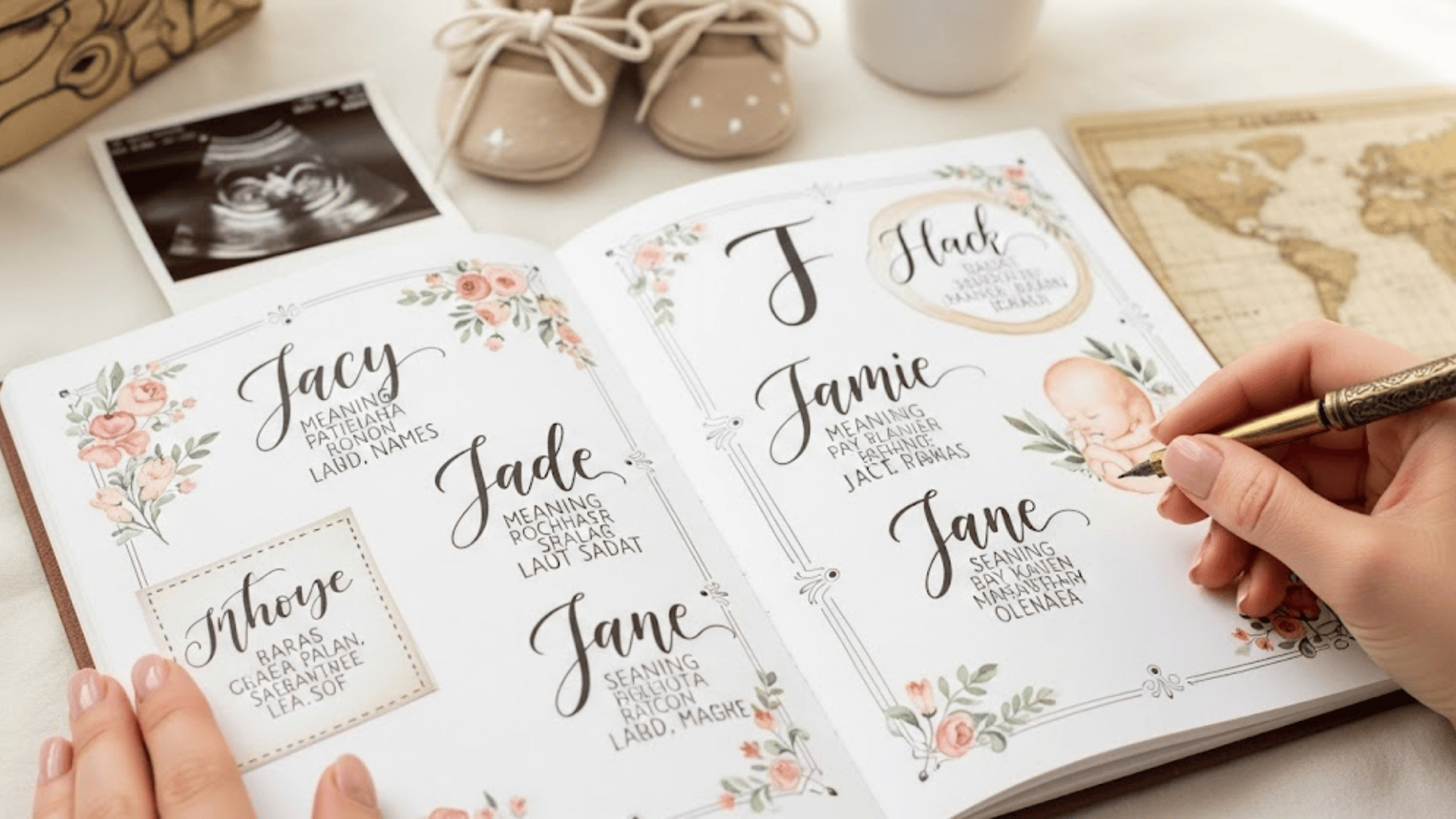Crack the Code of Chronological Writing
When reading nonfiction texts, it’s crucial to understand how information is organized.
One of the most common patterns is the chronological text structure.
This structure presents events or steps in the order they occur: first, then, next, and finally.
It’s used in biographies, history books, how-to guides, and more.
Recognizing this pattern helps students comprehend texts more easily and write clearer essays.
Let’s explore what chronological text structure means, how to identify it, and where you’ll find it in real life.
We’ll also look into examples and signal words that guide readers through time-based information.
Chronological text structure is when events, ideas, or steps are presented in the order they happen over time.
The word “chronological” originates from the Greek word chronos, meaning “time.”
This structure answers the question: what happened first, next, and last?
It’s commonly used in biographies, autobiographies, historical accounts, personal stories, timelines, and how-to or procedural writing.
By following a logical flow of time, this structure helps readers easily understand what’s going on, see cause and effect, and remember important details in the proper sequence.
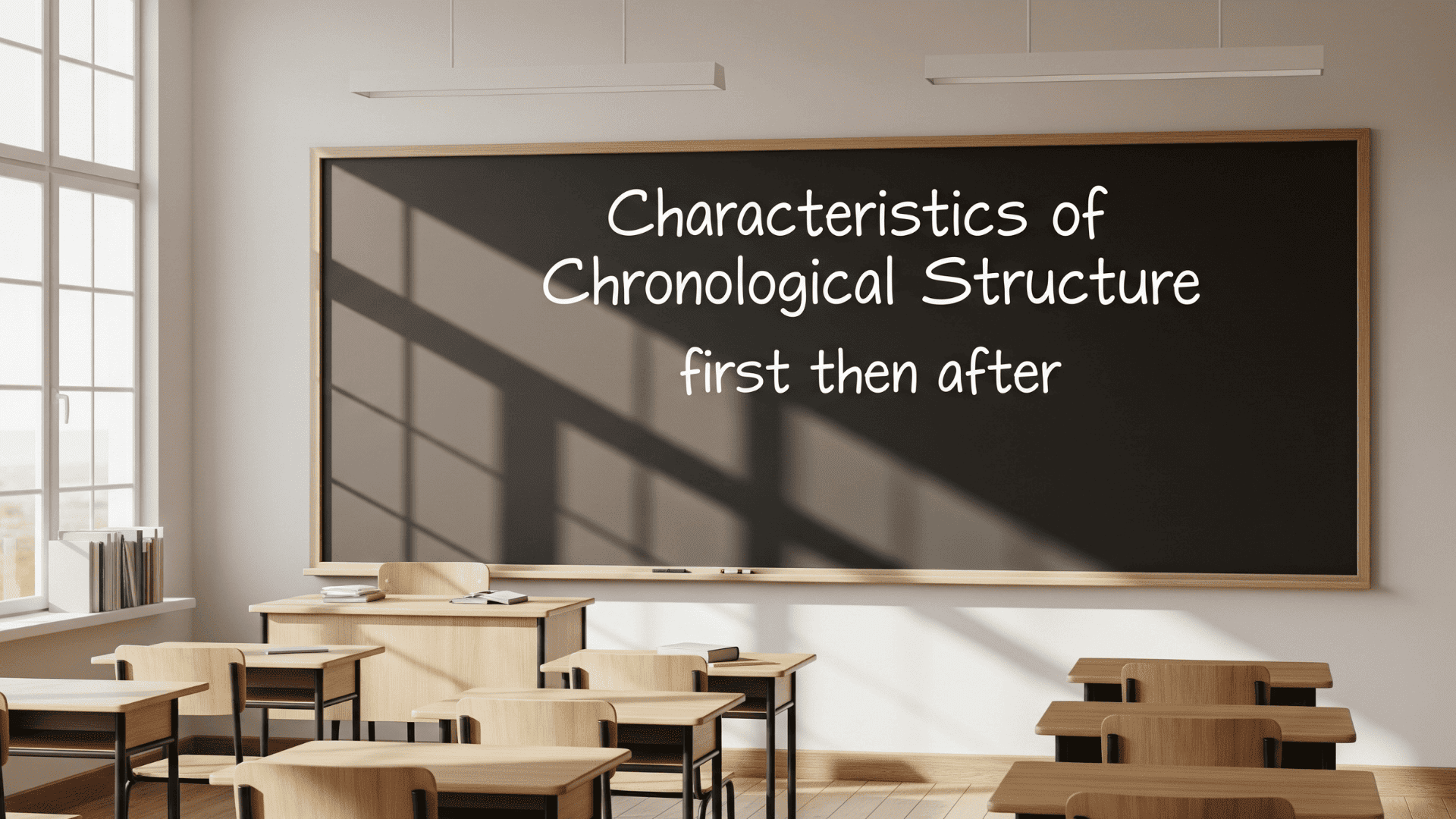
Texts written in chronological order have distinct features that make them easily identifiable.
They follow the natural order of time, presenting events just as they happened, step by step.
You’ll often notice a clear beginning, middle, and end, with signal words like “first,” “then,” “after,” or specific dates and ages to mark the passage of time.
This structure helps readers picture a timeline or understand how something unfolds, whether it’s a life story or a set of instructions.
It’s a standard format in both narrative nonfiction and informational writing because it makes complex ideas easier to follow.
Signal words are indicators that assist readers in identifying a chronological pattern.
These include:
Example sentence:
“First, the settlers arrived in 1620. Then, they built small homes near the coast.”
These signal words show time order and help guide the reader through a series of events.
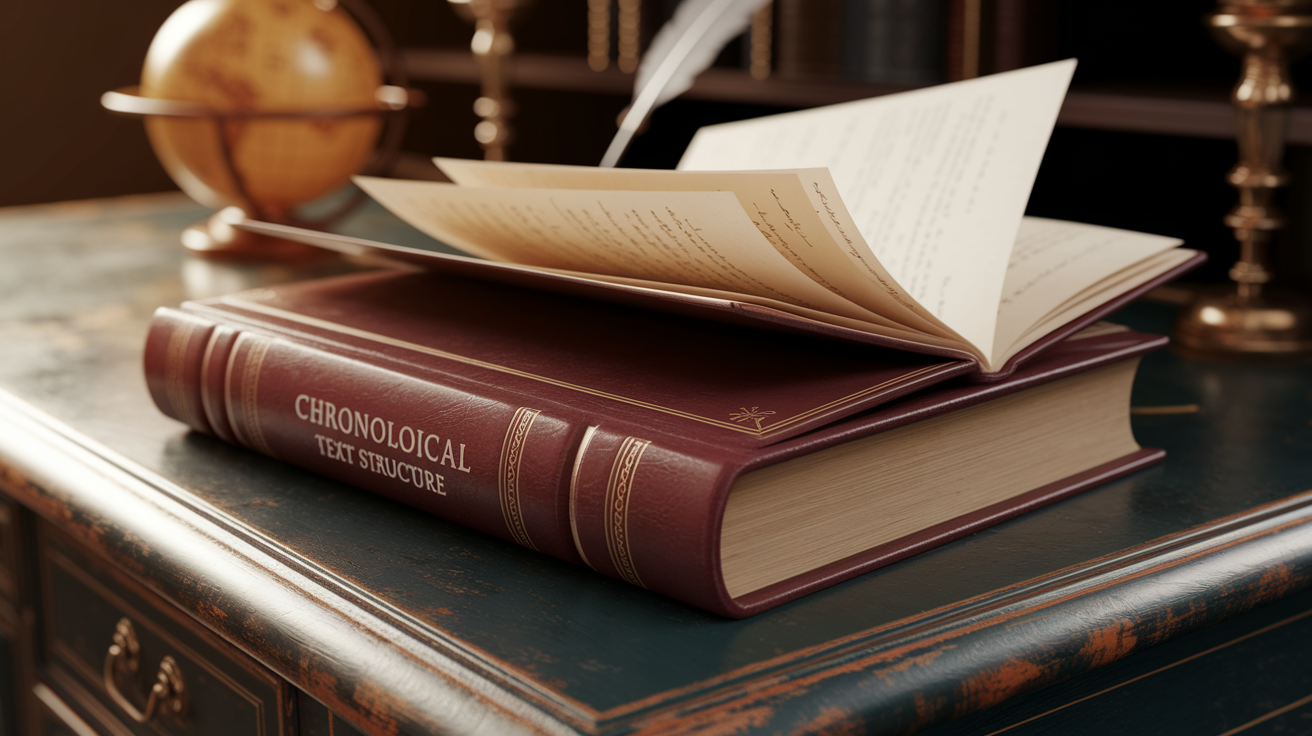
Let’s look at various writing styles that use a chronological format.
“Abraham Lincoln was born in 1809. As a young boy, he worked on a farm and read books by candlelight. In 1860, he became the 16th president of the United States. He led the country through the Civil War and was tragically assassinated in 1865.”
This example tells Lincoln’s life events in order, from birth to death.
“World War II began in 1939 when Germany invaded Poland. In 1941, the United States entered the war after the attack on Pearl Harbor. The war ended in 1945 when the Allied forces defeated Germany and Japan.”
This is a typical use of time order to explain a historical timeline.
“First, gather your ingredients. Then, mix flour and sugar in a bowl. Next, add eggs and milk. Finally, bake the batter in the oven at 350°F for 30 minutes.”
This illustrates a process or steps in order, along with standard instructions and recipes.
“I woke up early on Saturday morning. After breakfast, I grabbed my backpack and met my friends at the park. We hiked the trail, stopping for snacks along the way. By sunset, we reached the top of the hill and took pictures of the view.”
This type of storytelling shows a precise sequence of personal experiences.
Use this simple checklist when reading a passage:
If most of your answers are “yes,” the text likely uses chronological structure.
It’s easy to confuse chronological text with other nonfiction structures. Here’s a quick comparison:
| Text Structure | Purpose | Signal Words |
|---|---|---|
| Tells events in time order | First, next, then, finally, in 1999 | |
| Shows why things happened | Because, since, due to, so, as a result | |
| Shows similarities/differences | However, unlike both, similarly | |
| Presents an issue and how it’s solved | Problem, solution, solve, issue | |
| Describes something in detail | For example, it includes |
Recognizing the differences helps improve reading comprehension and writing organization.

Use a chronological structure when explaining events or steps in the exact order they happened to improve clarity and understanding.
It’s perfect for personal stories, biographies, timelines, historical accounts, and science reports where order truly matters for reader comprehension.
By organizing ideas from start to finish, readers stay engaged, follow the flow easily, and see how events build upon each other.
By using this logical structure, you can improve retention, enhance sequencing skills, and create writing that’s clear, seamless, and a pleasure to read.
Try out these activities in the classroom or at home to help reinforce the concept:
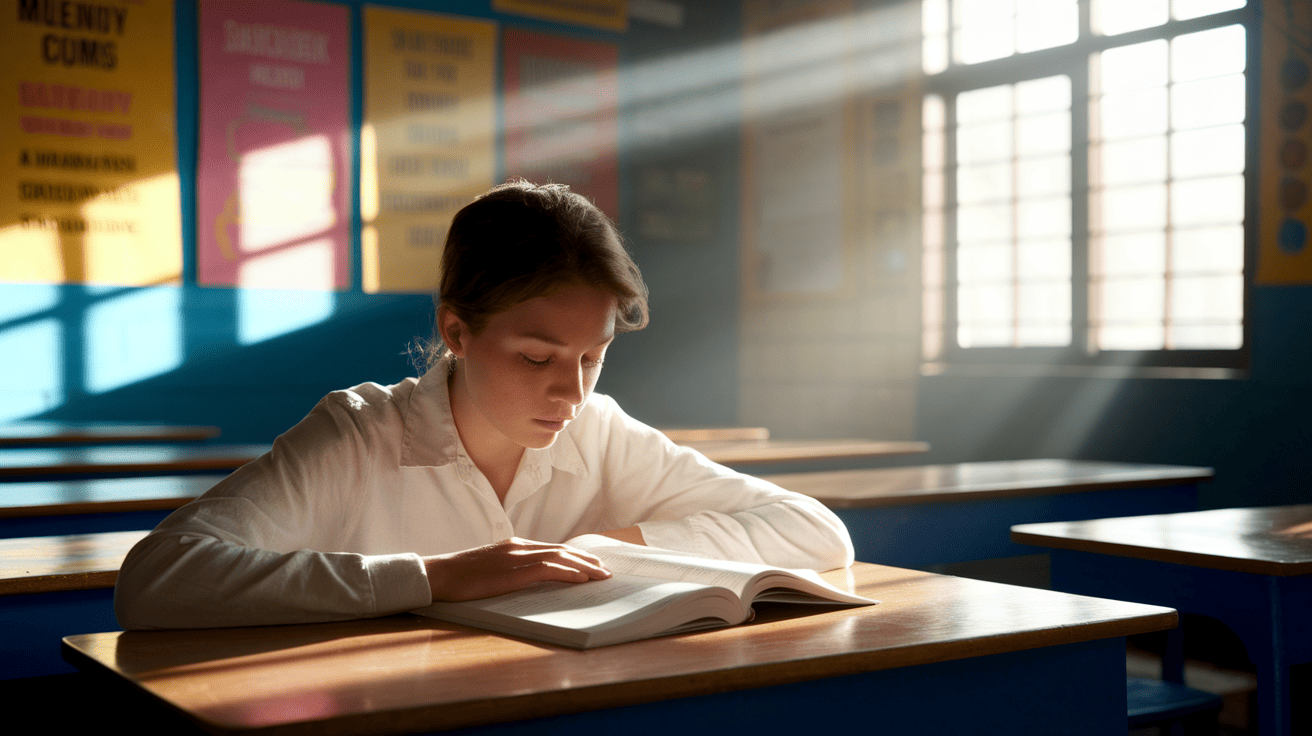
Have students read a passage and highlight key events in the order they occurred to understand the flow of the story.
Using those events, students will create a timeline that visually maps out the sequence from beginning to end for better clarity.
This engaging activity reinforces chronological structure, sequencing practice, and strengthens comprehension skills through visual learning and organization.
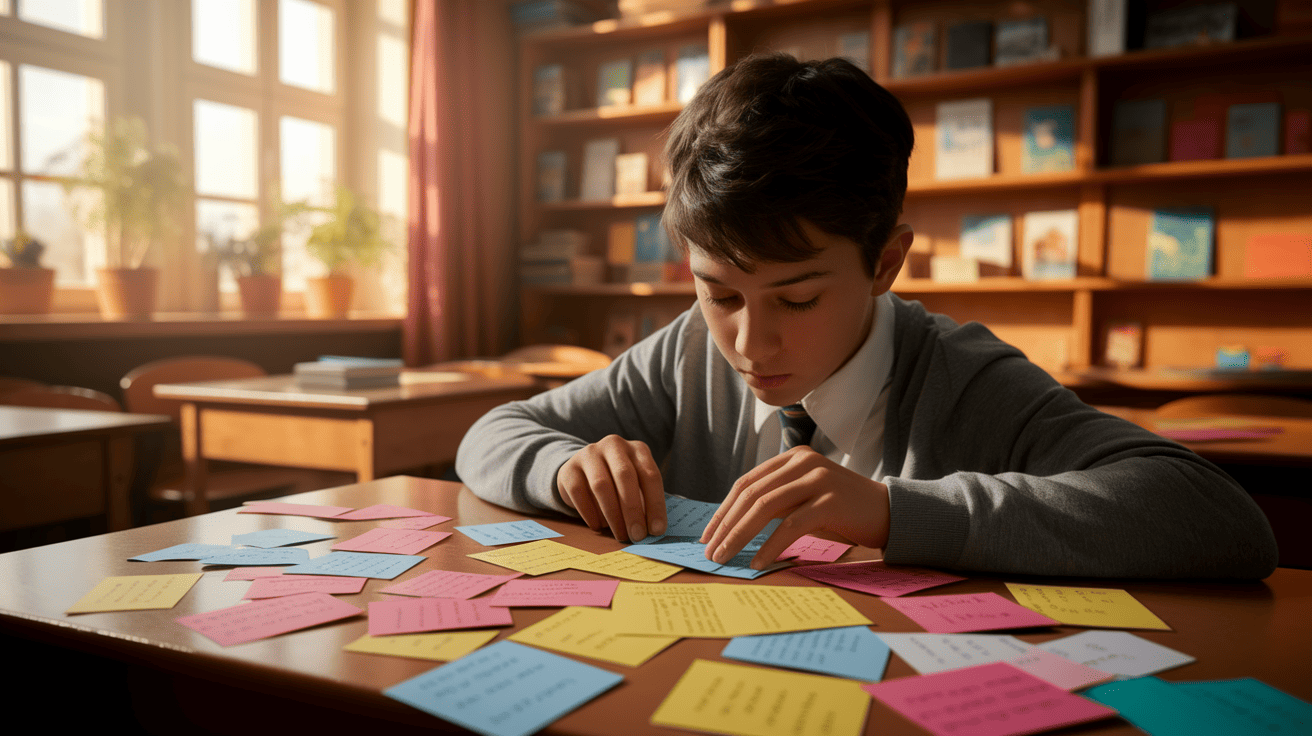
Give students mixed-up story events on slips of paper and have them read each part carefully to understand its place.
Ask them to rearrange the slips in the correct time order, forming a clear beginning, middle, and end from the original passage.
This boosts sequencing, comprehension, and strengthens understanding of chronological text structure through active, hands-on learning.

Give students a story written in a different text structure, such as cause and effect or problem and solution, to analyze and critique.
Challenge them to rewrite the passage so that events unfold in chronological order, focusing on the sequence from start to finish.
This activity strengthens comprehension, promotes flexible thinking, and deepens understanding of how different structures contribute to shaping meaning in a text.

Have students write a brief daily journal entry, focusing on events in the order they happened, using clear signal words.
Encourage use of terms like “first,” “then,” “next,” and “last” to structure their writing and improve flow.
This routine builds strong sequencing habits, reinforces chronological writing, and supports narrative development through consistent practice.
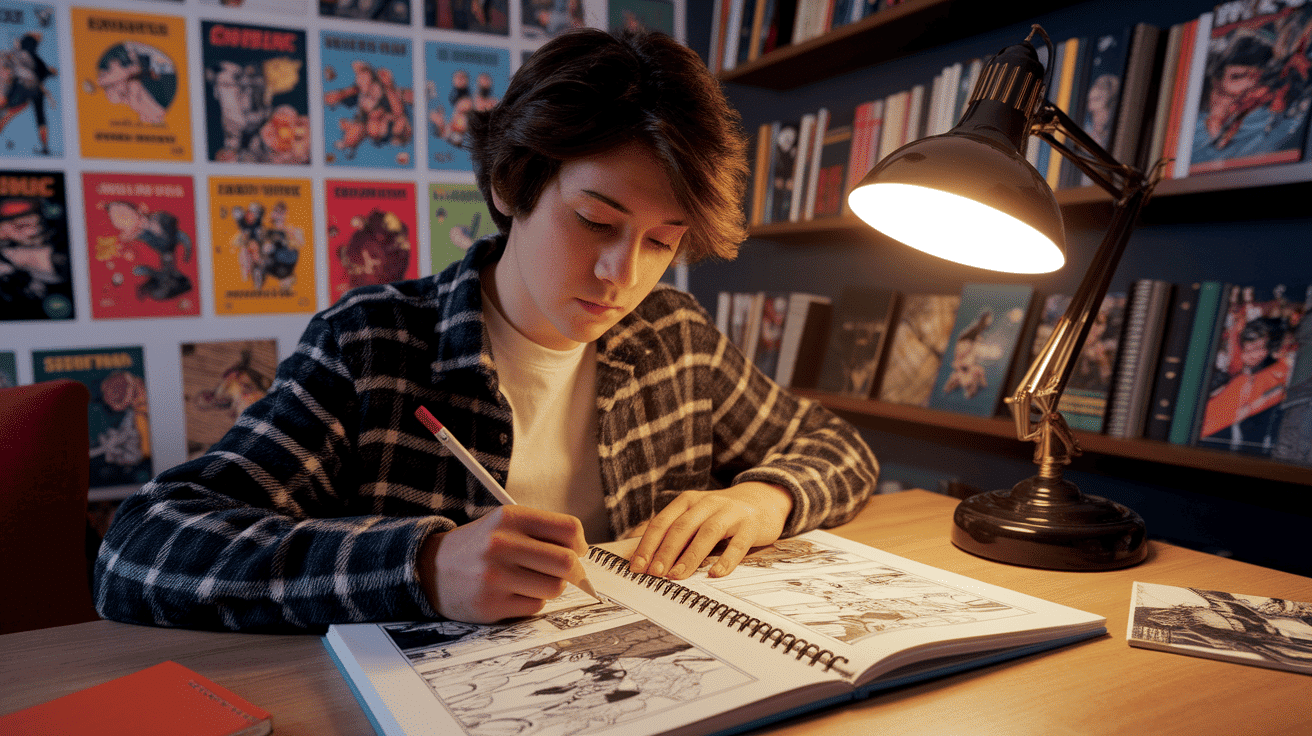
Ask students to create a four-panel comic strip that illustrates a precise sequence of events, including a beginning, middle, and end.
Encourage them to focus on storytelling through images and captions, showing how events unfold step by step.
This activity strengthens understanding of chronological order while blending creativity with writing and structure recognition.
Here are some simple and effective ways to teach chronological text structure.
These strategies help students recognize time-order patterns and apply them confidently in their reading and writing.
Start small with two or three events, then build up to more extended sequences.

Help students master chronological writing by identifying and correcting these frequent errors!
Encourage students to use revision checklists and outlining techniques to maintain logical progression and stronger writing!
Chronological text structure is one of the most useful and easy-to-recognize patterns in nonfiction writing.
It organizes events in the order they happened, helping readers understand time-based information clearly.
You’re reading a history lesson, a biography, or a recipe; recognizing time-order clues can improve both comprehension and writing skills.
Using signal words, timelines, and consistent transitions makes this structure easy to master.
With regular practice, students can apply chronological structure to everything from personal stories to academic reports.
It’s a skill that supports both reading fluency and clear, organized writing at every level of learning.
If you’re interested in more informational content on education & learning, feel free to and look at other blogs that you might enjoy.











